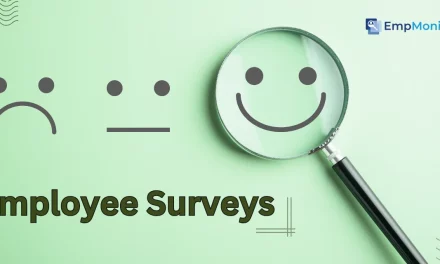BYOD (Bring Your Own Device) is changing the way businesses work. Employees love the flexibility of using their own smartphones, laptops, and tablets for tasks, while companies benefit from improved work performance and reduced hardware costs.
But managing BYOD isn’t always easy. Without the right strategy, your company could face security risks, data breaches, and even productivity issues.
That’s where having an effective BYOD management strategy comes in. By setting up the right BYOD policy, you can ensure your team stays productive and secure. From protecting company data to improving work performance, the key to success lies in managing employee devices the right way.
In this blog, we’ll share 10 secrets to help you master BYOD management while keeping security tight and performance high.
Ready to improve your BYOD strategy? Keep reading to find out how to maximize flexibility, enhance security, and boost team productivity in your workplace.
Listen To The Podcast Now!
What Is BYOD Management?
BYOD management refers to the process of overseeing and securing employee-owned devices, such as smartphones, laptops, or tablets, used for work purposes. As more companies embrace the “bring your own device” (BYOD) policy, managing these personal devices becomes crucial for maintaining productivity and protecting sensitive company data. BYOD management ensures that employees can access corporate resources without compromising security.
At its core, these system involves setting up policies that define how personal devices are used in the workplace. This includes controlling what company data can be accessed, implementing cyber security protocols like encryption, and ensuring compliance with company regulations. The goal is to balance flexibility for employees while maintaining a secure and efficient business environment.
With effective BYOD management, businesses can take advantage of the increased mobility and convenience that come with allowing employees to use their own devices. However, without a solid “bring your own device” policy in place, companies risk exposing themselves to security breaches, data loss, and unauthorized access.
By setting clear policies and using mobile device management (MDM) tools, businesses can successfully implement a BYOD strategy that benefits both employees and the organization. In addition to managing devices, a workforce management software like EmpMonitor can help track employee productivity and ensure that work is getting done, regardless of the device being used.
Why Is BYOD Management Necessary?
In today’s fast-paced business world, employees increasingly prefer to use their own devices—smartphones, laptops, and tablets—for both personal and professional tasks. This flexibility allows them to streamline their workday, improve productivity, and engage with their work using technology they’re already comfortable with. But as convenient as it sounds, this practice comes with significant risks, making BYOD management a critical component for modern businesses. Here are some more reasons showing why BYOD management is important in organizations.
Security Risks and Data Protection
One of the biggest concerns with allowing employees to bring their own devices is security. Without proper BYOD management, companies leave themselves open to malware, phishing attacks, and unauthorized access to sensitive data. Devices connected to corporate networks can easily become entry points for cyberattacks, especially if they’re not properly protected. Managing these devices with a well-thought-out BYOD policy ensures that companies can control access, secure corporate apps, and keep data safe, all while allowing employees to continue using their personal devices.
Employee Engagement and Productivity
A solid BYOD management plan also boosts employee engagement. Employees appreciate the freedom to use their own devices, increasing job satisfaction and making it easier for them to balance work and personal tasks. This level of comfort directly ties into ways to improve work performance, as employees are likely to be more efficient when using technology they are familiar with. A well-managed BYOD program provides clear guidelines, making sure employees know how to access work resources securely, without risking company data.
Cost Savings for Companies
Another benefit of BYOD management is cost savings. Allowing employees to use their personal devices reduces the need for businesses to provide company-owned equipment, significantly cutting down on hardware and maintenance expenses. However, these savings only make sense if there is a robust BYOD policy in place to protect the organization from potential risks.
Why BYOD Management is Essential
Incorporating BYOD management into your organization’s policies is essential for both security and productivity. It formalizes the use of personal devices in the workplace, protects the company’s data and network, and improves employee engagement and performance. With the right strategy, a BYOD program can lead to a more flexible, productive, and secure work environment.
Challenges Of Using Personal Devices At Work
Navigating personal devices at work presents unique challenges for employers.
Lack of Internal Support
BYOD management often falls between the business and IT functions, leaving personal device users without adequate support. Since most service desks are designed to assist on-premises employees with company-issued devices, employees using their own devices may struggle to get the help they need, leading to frustration and decreased productivity.
Shadow IT Risks
When faced with slow request approvals or restrictive IT policies, employees might turn to unapproved apps or software to get their work done. This practice, known as shadow IT, bypasses company security measures and exposes the organization to potential data breaches. Without proper oversight, sensitive company data could be accessed or shared without authorization, increasing security risks.
Risk of Lost or Stolen Devices
Personal devices are more likely to be lost or stolen compared to company-issued devices, which poses a significant risk for businesses. With cloud-native apps making it easy to sync and share data, losing a device could result in sensitive company information falling into the wrong hands. This is especially concerning for organizations with strict data security requirements.
Security and Compliance Concerns
Storing sensitive company data on personal devices may not meet the necessary security and compliance standards, particularly in industries like finance, healthcare, or legal sectors. Employers must weigh the benefits of a BYOD policy against the risk of compromising data security, especially when compliance with regulations is at stake.
Need for Effective BYOD Management
To balance employee convenience and company security, effective BYOD management is essential. Employers must implement robust security measures, such as Mobile Device Management (MDM), to ensure that personal devices used for work are properly secured. Without these measures, the risks associated with BYOD can easily outweigh the benefits.
Read More:
7 Cybersecurity Tips For Your Staff Working Remotely
12 Top Most Enquired Questions About Employee Monitoring Laws
BYOD Security Best Practices
In the modern workplace, employees increasingly prefer to use their own smartphones, tablets, and laptops for both personal and professional tasks. This flexibility enhances productivity and employee satisfaction. However, it also presents significant challenges for businesses, particularly in terms of security and data protection. To navigate these challenges, effective BYOD management is essential. Below are 10 key strategies to ensure the success and security of a bring your own device policy.
Develop a Clear BYOD Policy
The cornerstone of effective BYOD management is a well-defined, easy-to-understand policy. This document should outline all security expectations, usage guidelines, and compliance rules for employees using their personal devices at work.
A clear BYOD policy minimizes misunderstandings and mitigates security risks by setting precise boundaries. Regularly updating the policy is equally important to adapt to the evolving tech landscape and stay aligned with industry standards.
Implement Mobile Device Management (MDM)
MDM plays a critical role in ensuring robust security for personal devices. By integrating MDM solutions, IT teams can remotely configure device settings, enforce strong password policies, and lock devices after inactivity.
One of MDM’s strongest features is the ability to wipe data from lost or stolen devices, preventing unauthorized access. Beyond security, MDM also streamlines software updates and application distribution, ensuring all devices stay secure and efficient across the board. This holistic approach to BYOD management ensures both company data and personal information are safeguarded.
Utilize Mobile Application Management (MAM) for Work Apps
Mobile Application Management (MAM) focuses on securing work-related applications without affecting personal apps. This strategy ensures that employees’ private data remains untouched, while IT teams can enforce security policies strictly within work apps.
If an employee leaves the company or loses their device, IT administrators can remotely wipe corporate data without disrupting personal content. MAM also provides valuable insights into the performance of work apps, helping businesses optimize their mobile ecosystem for greater productivity and security.
Perform Regular Security Audits and Compliance Checks
Conducting regular security audits is essential for assessing the effectiveness of your BYOD management strategy. These audits scrutinize all aspects of your BYOD infrastructure, including devices, networks, and data access points, to identify any vulnerabilities. Compliance checks ensure that your BYOD practices align with industry regulations and employee monitoring laws.
This proactive approach helps your organization remain secure and compliant while identifying any gaps or areas of improvement in your BYOD management process.
Leverage Unified Endpoint Management (UEM)
Unified Endpoint Management (UEM) simplifies the oversight of multiple device types and operating systems, consolidating management efforts into one streamlined platform. UEM gives IT administrators comprehensive control over security policies, applications, and data across all devices. This ensures a uniform security posture regardless of device type or location.
With built-in troubleshooting and reporting tools, UEM makes it easier to keep all endpoints secure, productive, and compliant with BYOD policies.
Strengthen Security with VPNs and Multi-Factor Authentication (MFA)
To safeguard sensitive data, organizations should implement Virtual Private Networks (VPNs) and Multi-Factor Authentication (MFA). VPNs create encrypted tunnels between user devices and company servers, protecting transmitted data from potential threats.
Meanwhile, MFA adds an extra layer of security by requiring users to verify their identity using multiple methods, such as passwords and fingerprint scans. This dual approach ensures that only authorized individuals can access critical company data, keeping cyber threats at bay.
Simplify Device Onboarding and Offboarding
An efficient BYOD management strategy hinges on seamless device onboarding and offboarding processes. New employees should be able to quickly integrate their devices into the work environment while departing employees must have company data securely removed without affecting personal files.
Automated workflows for onboarding and offboarding make the process smooth, ensuring minimal disruption to employee productivity. Clear instructions and guidelines can also help new hires comply with company policies from the start, boosting overall security and user satisfaction.
Monitor Device and Network Activity
Continuous monitoring of device and network activity is a proactive way to detect and prevent security threats in real-time. BYOD management tools can track behavior patterns, network access, and data usage, providing insights into potential issues such as unauthorized access or unusual activity.
Automated alerts for specific events, like repeated login failures, help IT teams respond swiftly to security breaches. Proper monitoring also contributes to refining BYOD policies over time, balancing security needs with employee privacy.
Provide Adequate IT Support for BYOD Users
Effective BYOD management involves offering reliable IT support to address user concerns and technical issues. Having a dedicated help desk or self-service portal enables employees to troubleshoot common problems, minimizing downtime and enhancing productivity.
Additionally, these support platforms can offer step-by-step instructions for device registration and security compliance, helping employees adhere to BYOD guidelines without frustration.
Implement Green BYOD Management Practices
Sustainability is an increasingly important aspect of modern business, and BYOD management can contribute to green initiatives. By using energy-efficient hardware and virtualization technologies, businesses can reduce the environmental impact of their data centers.
Many employees today prioritize sustainability in the workplace, making green BYOD practices an attractive incentive. Beyond improving security and productivity, these eco-friendly initiatives reflect a company’s commitment to responsible IT practices and help reduce its carbon footprint.
Leverage Workforce Monitoring for Enhanced Security and Productivity
An effective BYOD management strategy isn’t just about securing devices; it’s about monitoring employee performance and protecting sensitive data. Implementing workforce monitoring solutions provides valuable insights into how devices are used, the flow of sensitive information, and employee productivity.
EmpMonitor, a leading workforce management software, allows you to track real-time device usage, identify potential security breaches, and ensure that employees remain productive while using their personal devices. With features like time tracking, activity monitoring, and detailed reports,
EmpMonitor helps organizations maintain a secure, efficient, and productive BYOD environment. This added layer of oversight ensures that personal devices, while offering flexibility, never compromise company data or employee performance.
Let’s have a detailed look at this powerful workforce management software.
EmpMonitor: The Workforce Management Software
EmpMonitor is a robust employee monitoring tool that enhances workforce productivity. Trusted by over 500,000 employees in more than 100 countries across various industries, it offers:
Web Data and App Usage
Keep your eyes on what websites your employees visit and identify any possible online time stealers. PInpoint blind spots and maintain enterprise-level management with a solid framework to shield the employees’ productivity from potential app distraction.
Automatic Timesheets
EmpMonitor provides an automatic timesheet that helps in avoiding manual time entry. It automatically starts tracking time once the user starts the computer and gives accurate activity insights.
Project Management:
- Customized Access Levels: Set specific access permissions for team members to control their access and responsibilities.
- Role Assignment: Clearly define and assign roles to individuals, ensuring tasks align with their skills.
- Member Groups: Organize team members into groups to facilitate better communication and collaboration.
- Timeline Monitoring: Keep track of project timelines, documenting task progress and deadlines.
- Task and Subtask Management: Manage tasks and subtasks with full CRUD capabilities for detailed tracking and control.
Shift Management:
- Real-Time Tracking: Monitor shift schedules and attendance in real time to ensure optimal staffing.
- Efficient Scheduling: Easily handle shift changes and manage employee schedules for smooth operations.
Additional Features:
- Time Tracking: Accurately record work hours to manage billing and productivity.
- User Activity Monitoring: Track employee computer activity to assess performance and ensure security.
- Insider Threat Prevention: Implement strategies to detect and prevent potential internal threats.
EmpMonitor’s comprehensive features ensure effective workforce management and workforce optimization.
Bottom Line
Effective BYOD management is essential for today’s flexible workplaces. It balances employee freedom with company security, enhancing productivity while protecting sensitive data. By implementing these strategies, you can create a secure environment that empowers your team.
Looking for a way to streamline your BYOD approach? EmpMonitor offers powerful tools to optimize workforce management and keep your data safe.
Thanks for reading! We’d love to hear your thoughts. Share your comments below!
Frequently Asked Questions
Is BYOD a good policy overall?
Yes, BYOD can enhance workplace productivity and collaboration by allowing employees to use familiar devices. However, robust security policies are crucial to address potential risks.
Should employees sign a BYOD policy agreement?
Yes, having employees sign a BYOD policy agreement helps clarify expectations, responsibilities, and security protocols, ensuring everyone understands the guidelines for using personal devices at work.
How should companies handle lost or stolen devices?
Companies should have procedures in place for reporting lost or stolen devices, including remote wipe capabilities to protect data and prevent unauthorized access.














